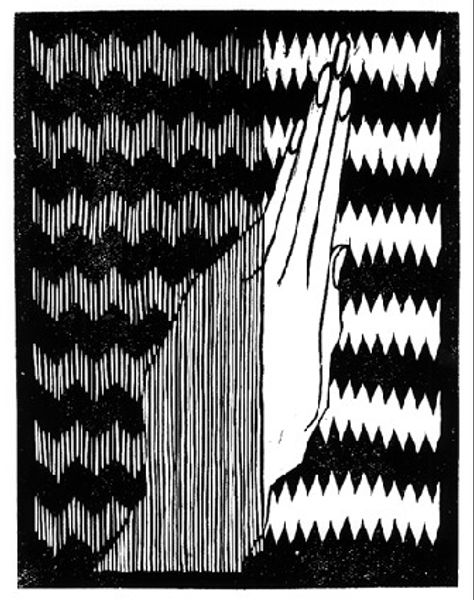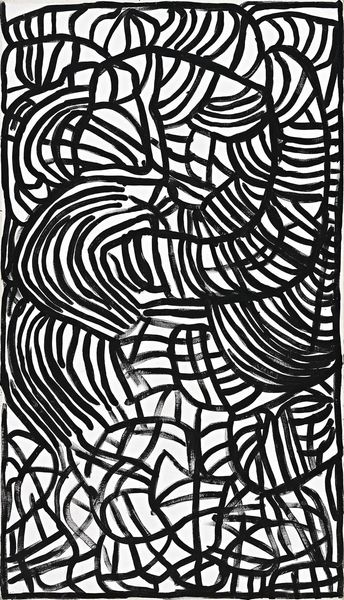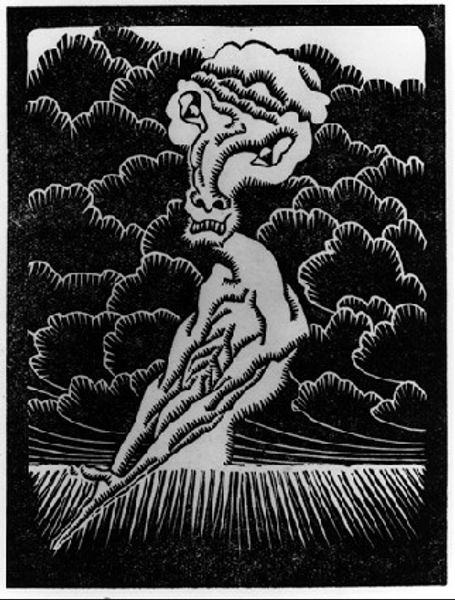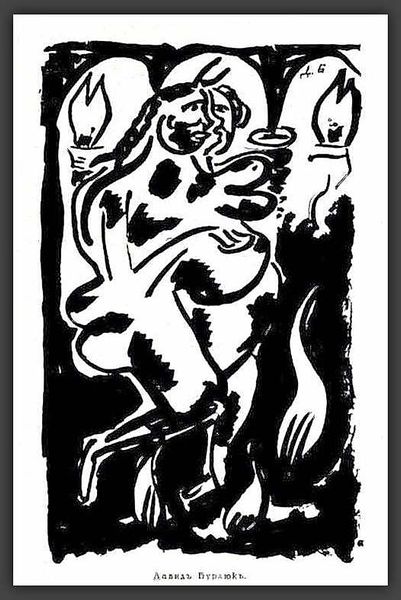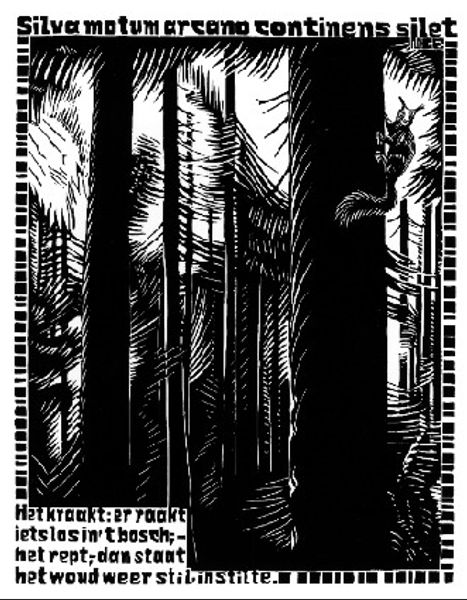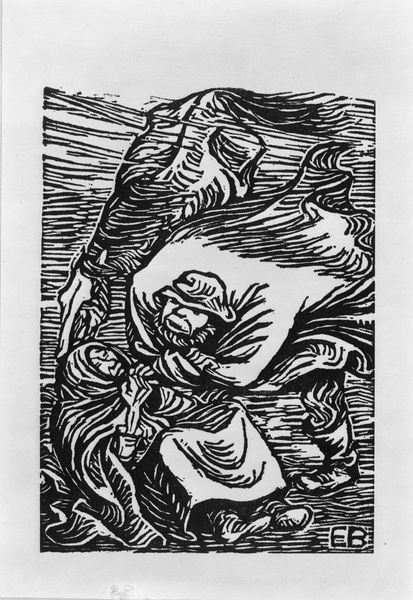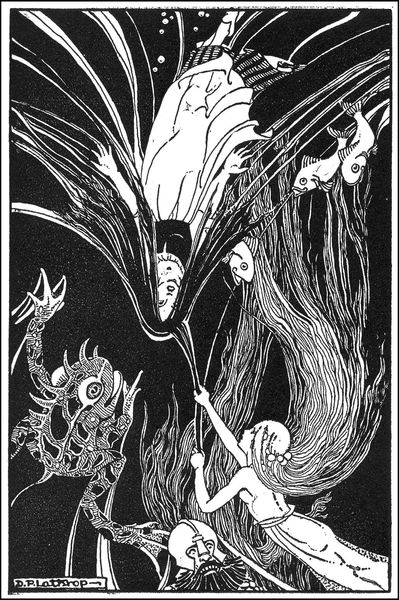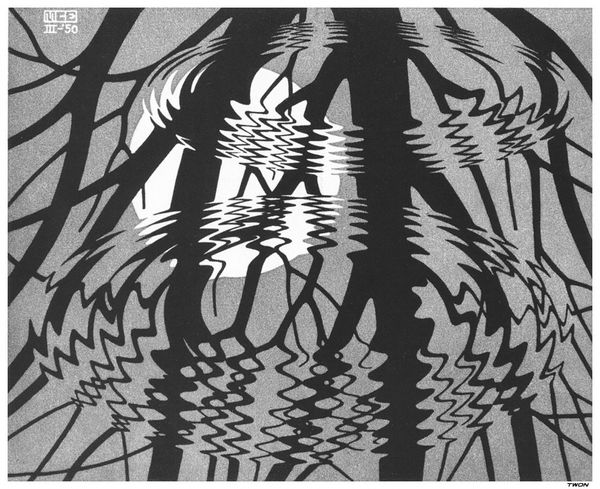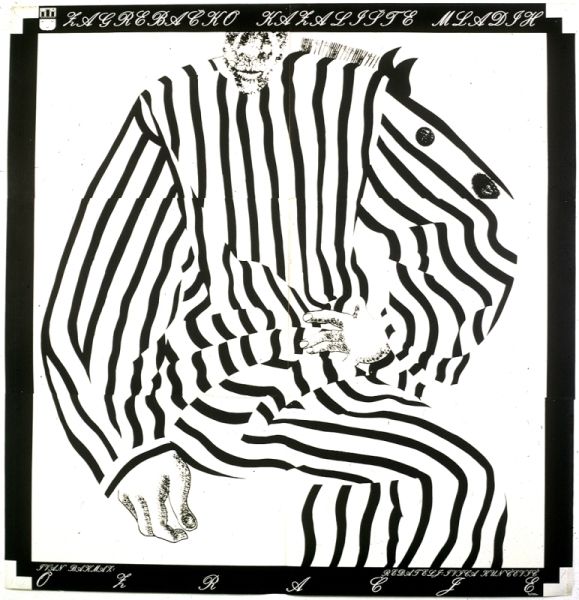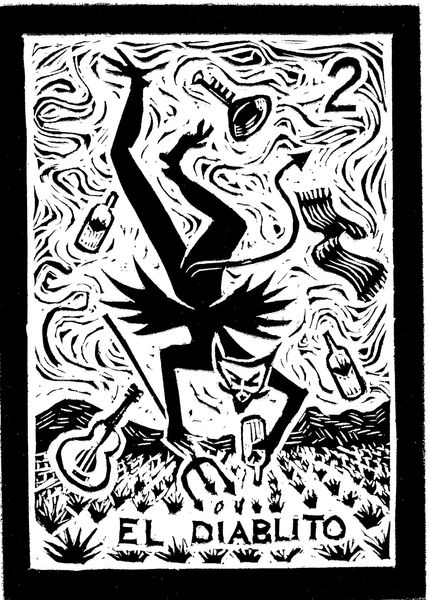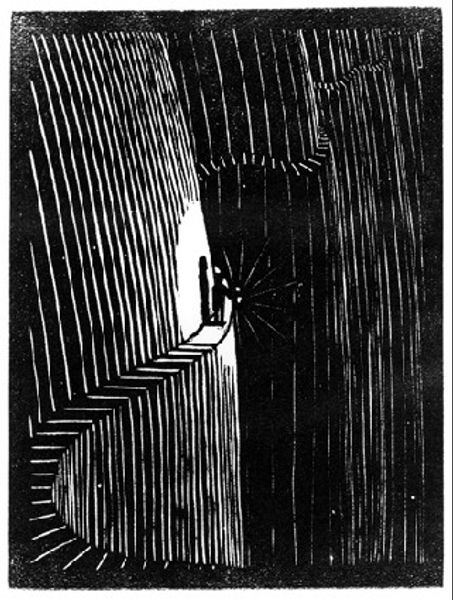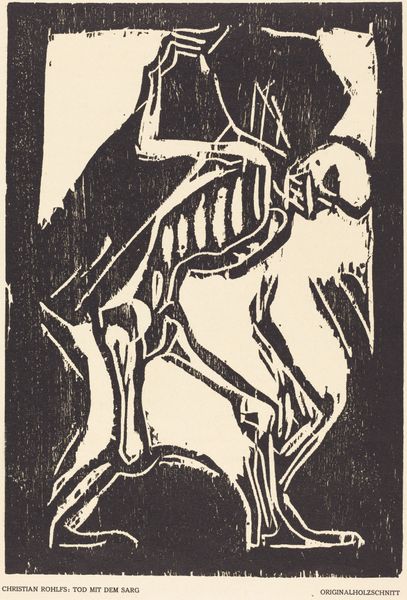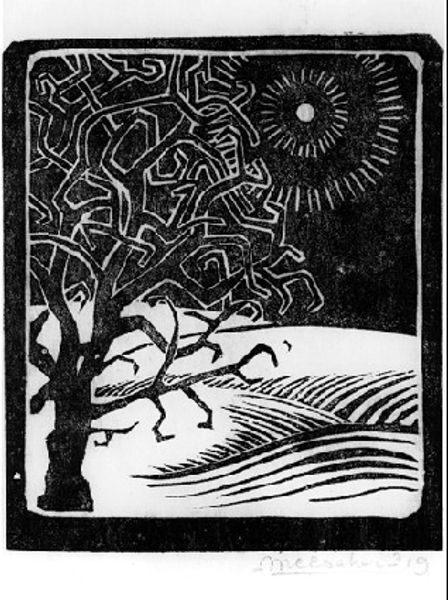
Copyright: Public domain US
Curator: Here we have M.C. Escher's "Flor de Pascua - Fulfillment," created in 1921. It’s a woodcut, showcasing his early explorations with stark contrasts and figuration, predating his better-known tessellations. Editor: It gives me this claustrophobic sensation. Like being surrounded by reeds, but instead of tranquility, there's something a bit menacing about those dense black lines pressing in on the figure. What do you make of that? Curator: It's a potent atmosphere, certainly. The dynamic play between positive and negative space forces our eye to discern form from abstraction. The geometric treatment of natural forms like those flower-like or flame-like patterns surrounding the central character lends a powerful sense of psychological weight, almost bordering on Expressionism. Editor: Right, because the central figure almost vanishes into the reeds. It's almost as if nature's both protective and consuming. The lack of gray tones—just pure black and white—adds to this heightened drama. Tell me more about that hidden figure, though? Curator: In exploring Escher’s history at the time, it is important to mention the possible influences of Art Nouveau on his style. Escher would explore various realms during the period; the angular, sharply delineated form echoes archetypal images. What seems at first to be a portrait of this androgynous character with stylized features becomes completely entwined with the geometric patterns around them, suggesting themes of emergence and confinement, blending organic forms and more geometric structures. Editor: Which loops us back to that feeling of being utterly enveloped. Even though it’s static, there is movement—or impending movement, in the piece. You know, I was just reading something about ink line art from that period, Junji Ito style, in particular, with the dark outlines. Is that on point with Escher’s art? Curator: Very possibly. And in examining the recurring motif of linear designs in woodcuts, which certainly appears to resonate here in Fulfillment, one might find a commentary on mortality as well. Editor: Wow. So what starts as a seemingly straightforward image reveals layer upon layer of meaning. It's almost dizzying! Curator: Indeed. "Fulfillment," in its seeming simplicity, opens doors to pondering on the balance between expression and constriction and reminds us of our intertwined relationship with the spaces that hold us. Editor: You’ve given me a totally different perspective on this work, and you've highlighted Escher’s ability to weave complex symbolic threads within relatively simple visual forms. It is incredible to see how art, at any given moment, can create lasting historical meaning.
Comments
No comments
Be the first to comment and join the conversation on the ultimate creative platform.
